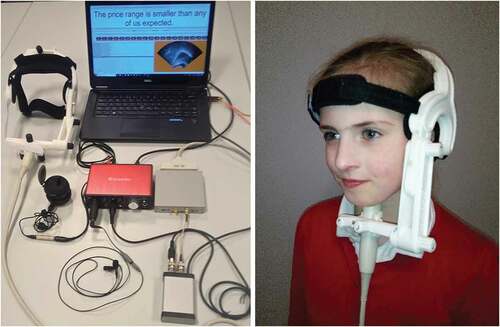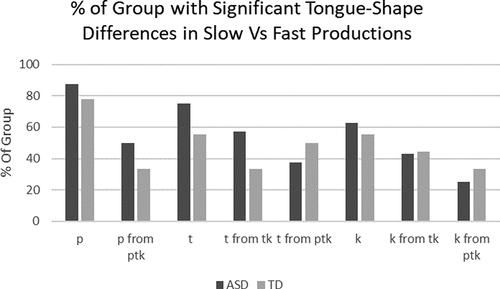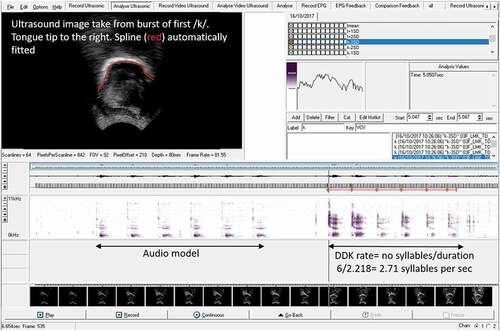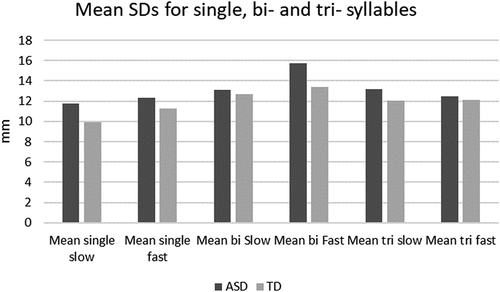Figures & data
Table 1. Demographic details and assessment scores
Table 2. Prompt rates in syllables per second from McCann and Wrench (Citation2007)
Figure 1. Ultrasound equipment (L) and headset (R). Note: Photograph on left copyright articulate instruments, reproduced with permission. Photograph on right copyright Joanne Cleland, reproduced with permission.

Figure 3. Example mean tongue curves from /p/ at slow (red) and fast (green) rates with standard deviations in dotted lines. A zone of significantly different radii are shown as green spokes on the arc. In this example 7 consecutive radii have an average radial difference of 1.5 mm.

Table 3. Maximum rate in syllables per second
Table 4. Accuracy
Table 5. % consistent
Table 6. Articulatory t-test results comparing tongue shapes at slowest and fastest rates
Figure 4. Percentage of each group with significant tongue-shape differences in slow versus fast productions.

Table 7. Standard deviations of tongue-shapes at slow and fast rates in mm


